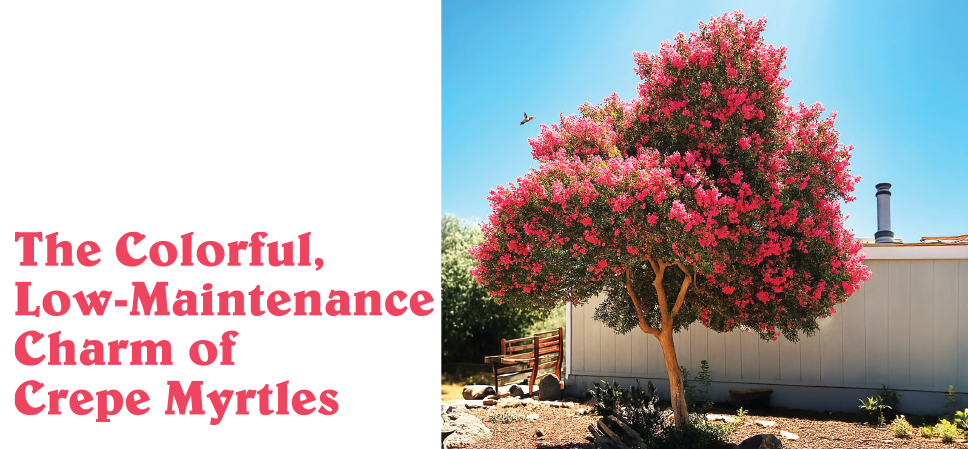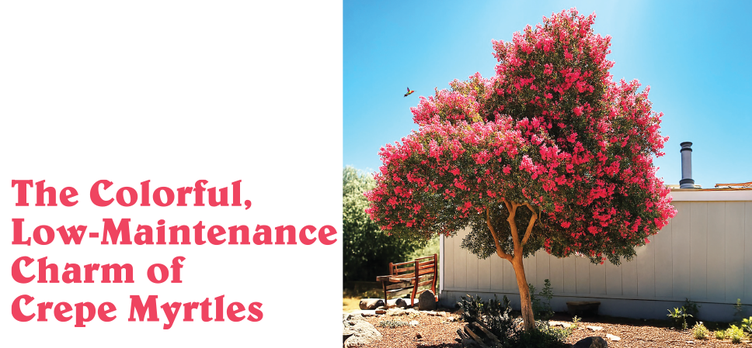In the sun-soaked gardens of the 209, few trees rival the crepe myrtle (Lagerstroemia) for sheer ornamental appeal. With their vibrant summer blooms, sculptural bark, and compact form, crepe myrtles offer year-round interest and thrive in the region’s Mediterranean climate.
These deciduous trees love heat and tolerate drought once established, making them ideal for low-maintenance landscapes. Popular varieties like ‘Natchez’ (white), ‘Tuscarora’ (coral-pink), and ‘Dynamite’ (red) flourish in full sun, producing abundant blooms from late spring through early fall.
Planting Tips
Choose a sunny spot with well-draining soil. While crepe myrtles adapt to various soil types, they prefer slightly acidic conditions. Dig a hole twice as wide as the root ball, and plant at the same depth it was growing in the container. Water deeply after planting and mulch to retain moisture and suppress weeds.
Watering & Feeding
Young trees need regular watering during their first year. Once established, they’re drought-tolerant but benefit from occasional deep watering during dry spells. Feed in early spring with a balanced fertilizer to encourage healthy growth and flowering.
Pruning Wisely
Avoid the common mistake of “crepe murder”—severe topping that weakens the tree and ruins its natural form. Instead, prune in late winter to remove crossing branches, spent seed heads, and any suckers at the base. Aim to enhance airflow and shape without overcutting.
Pest & Disease Watch
Crepe myrtles are generally pest-resistant, though aphids and powdery mildew may appear. Neem oil or horticultural soap can help manage outbreaks.
Whether lining a driveway or anchoring a backyard garden, crepe myrtles bring elegance and resilience to Zone 9 landscapes. With just a little care, they’ll reward you with decades of dazzling color and graceful structure.





